Wherever a dark world materializes, there will always be a white lining, no matter how dim the darkness is or how small the white lining may be. The COVID-19 pandemic is no exception. Despite the dreaded current state, some outcomes could have a positive influence on humanity.
In this post, let’s explore some of the positive impacts the coronavirus has had on our lives.
#1. New Meaning to “Genuine Relationships”

We have all been accustomed to living a busy life. But what exactly is the definition of being busy? It was about rushing through the days and running around to meet the ends. Unfortunately, there was no end in sight. If you were one of those lucky few who would go for a vacation once or twice a year, even then, you knew pending emails were waiting for your return.
With COVID-19, life has slowed down to a crawl and the decrease in our pace is a positive one. While you are all still working and meeting ends, there is a new meaning to genuine relationships. You get time to spend with your family and your loved ones. Now how bad can that be?
Work-from-home arrangements may seem like a nuisance when you have kids and endless chores waiting for you, but on the flip side, you are getting all the time with your family and loved ones that you have always wished for. This proximity has given a new meaning to some precious relationships in life.
Moreover, you have identified ways to stay connected with the ones that you don’t live with. You may not fly around the world or have get-togethers over the weekends to meet your friends or others in your family, but with virtual options (some extra time), you can connect with them at the click of a button.
#2. New Levels of Gratitude
A positive impact of COVID-19 that is seldom highlighted is people experiencing new levels of gratitude. Gratitude is one of the core values that today’s generation seriously lacks. It is only natural to take everything for granted in a digitalized world where you have everything at your fingertips. From connections, relations, work, leisure, friends and family, we never got a chance to question all of these essentials because they were never taken away from us.
But with the pandemic surging in most parts of the world, there was a crisis that was completely new to us. The pandemic has challenged human’s need as a social animal. And while it is a severe crisis involving a huge cost, it has undoubtedly played a positive role in teaching gratitude among people and raising it to a new level.
#3. Improved Hygiene and Lifestyle
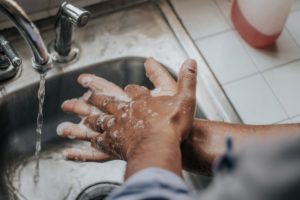
Back in the day, we would raise our eyebrows when we meet someone who is a ‘germaphobe’. But now are the days when practicing hygiene was a luxury and not a necessity (although it should always be a necessity). From frequent hand washing and sanitizing to covering your mouth as you cough or sneeze and disinfecting surfaces, we have come a long way in maintaining a clean and hygienic lifestyle.
Humans alive on the planet today will likely continue to practice good hygiene throughout their lives and pass it on to future generations as well; indeed, this planet may be the cleanest it has ever been!
#4. Global Connectedness
The entire world is devastated by the coronavirus pandemic. The rich European nations, along with the world’s developing countries are facing this crisis together. And governments globally are supporting each other in saving lives and creating opportunities for a better world. The United Nations, too, appealed for an immediate ceasefire across the globe to have the resources to fight the pandemic more effectively.
#5. Remote Working – The New Normal
 As the entire world executed COVID-19 closures, many companies switched to an entirely new working environment of remote working that gradually became the new normal. Many businesses now are fully functional, with 100% of employees working remotely. From a financial perspective, it means zero costs of physical locations, resulting in higher profits. When companies save cost, they can pass it on to the employees and other stakeholders, including their customers.
As the entire world executed COVID-19 closures, many companies switched to an entirely new working environment of remote working that gradually became the new normal. Many businesses now are fully functional, with 100% of employees working remotely. From a financial perspective, it means zero costs of physical locations, resulting in higher profits. When companies save cost, they can pass it on to the employees and other stakeholders, including their customers.
Moreover, with remote work arrangements becoming the new normal, there is a diminishing geographical boundary. People today can get a job based on their skill and not on their physical location. If the current remote working arrangement continues post-COVID, which it is most likely to do, we can expect the trend to take globalization of labor to a whole new level.
#6. Endless Innovation
Quarantining may be the most depressing time of the century, but it is also the period of many technological innovations in order to compensate for the employee quarantining. Today, individuals and organizations are coming up with ideas, tips and subsequently getting creative by devising previously unknown techniques to communicate and keep sales going. Whether it is about promoting your business product or service or about connecting with your teams and loved ones, the boredom during lockdown does have its positive points.
#7. Digitized Education
Regarding education, the pandemic is indeed one of the bleakest events for us today. But on the brighter side, technology has played an essential role in keeping everyone connected via remote training and other post-COVID health methods to learn but stay distant.
Physical school and university closures were a saddening event, especially for children, whose physician social interactions have come to a virtual close. How well they have adapted to remote learning is an ambivalent process. Some catch on fast while others have not grasped it well. For those that have gained from remote learning, we salute you and we can say that some positive aspects of COVID-19 education are working.
For those that are having a difficult time not being able to socialize with their friends, as well as not being able to adapt to remote learning, we say hang in there. The vaccines are coming!
Additionally, the sheer resilience shown by students and their parents around the world is a clear sign that nothing can stop the learning process!
#8. Enhanced Environment
COVID-19 induced lockdowns and closures have a positive impact on the environment. The global carbon emissions have decreased substantially, which has resulted in a significant improvement in air quality. The air is now cleaner and healthier than years before.
Other aspects of nature have also benefited from curtailed human activity. Reduced mining activities around the world have contributed to reduced seismic noise. With this improvement, we can now expect the seismologists to better detect the waves at a weaker frequency to improve human ability to predict earthquakes.
Moreover, with less than optimal industrial activity, we can expect a reduction in industrial waste dumped in the water. Furthermore, limited leisure activities in and around water are also likely to contribute to an enhanced environment.
There is also less driving and airlines have reduced their flights. All adds up to a cleaner environment.
Bottom Line
 We hope this article has helped brighten your day just a bit. The amazing connection that the coronavirus has created is indeed one of the most desirable aspects of the disease. And while these positive impacts come at the cost of human lives and global economic and physical depression, it is now up to us on how we want to take it forward.
We hope this article has helped brighten your day just a bit. The amazing connection that the coronavirus has created is indeed one of the most desirable aspects of the disease. And while these positive impacts come at the cost of human lives and global economic and physical depression, it is now up to us on how we want to take it forward.
If we stand united, regardless of our nationalities and personal interests, there is no way humanity cannot win over this virus. And once we survive through it, a new and improved world will be waiting for us with open arms.

 On October 2
On October 2 Antibodies are molecules produced by our body’s immune system to fight against infection. They are being studied to help with the development of a vaccine against COVID-19.
Antibodies are molecules produced by our body’s immune system to fight against infection. They are being studied to help with the development of a vaccine against COVID-19. 
 Pharmaceutical companies around the world are working towards the development of a vaccine for COVID-19.
Pharmaceutical companies around the world are working towards the development of a vaccine for COVID-19. 

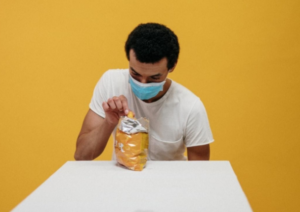 Oh how we all love to eat! And going out to our favorite restaurants makes it all the more fun, but now we have COVID and this is one situation that we cannot turn our heads and pretend that it is not there.
Oh how we all love to eat! And going out to our favorite restaurants makes it all the more fun, but now we have COVID and this is one situation that we cannot turn our heads and pretend that it is not there. The unfortunate circumstance about eating is that it requires you to open your mouth, which means you will be exposed to respiratory drops one way or another.
The unfortunate circumstance about eating is that it requires you to open your mouth, which means you will be exposed to respiratory drops one way or another.
 Now that the
Now that the  Perhaps, the most critical factor that affects the recovery process is the severity of its symptoms.
Perhaps, the most critical factor that affects the recovery process is the severity of its symptoms. 
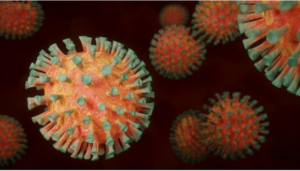


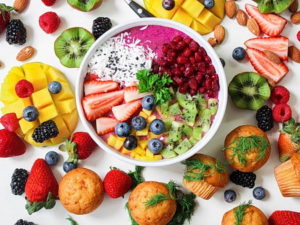
 While preparing and cooking food, you should
While preparing and cooking food, you should 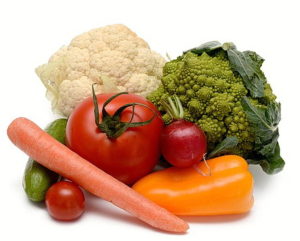
 At the end of the day, you have to remember that foods aren’t the only thing that will keep you safe. While the items mentioned here are considered the best nutrients and vitamins to take, especially during this pandemic,
At the end of the day, you have to remember that foods aren’t the only thing that will keep you safe. While the items mentioned here are considered the best nutrients and vitamins to take, especially during this pandemic,